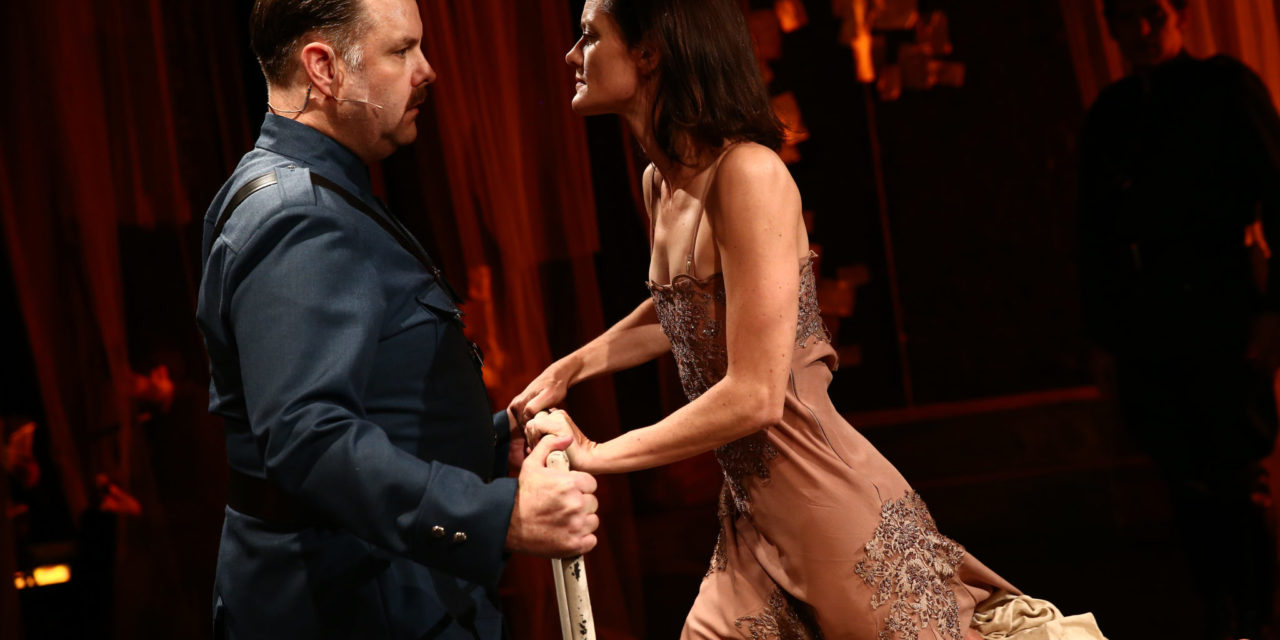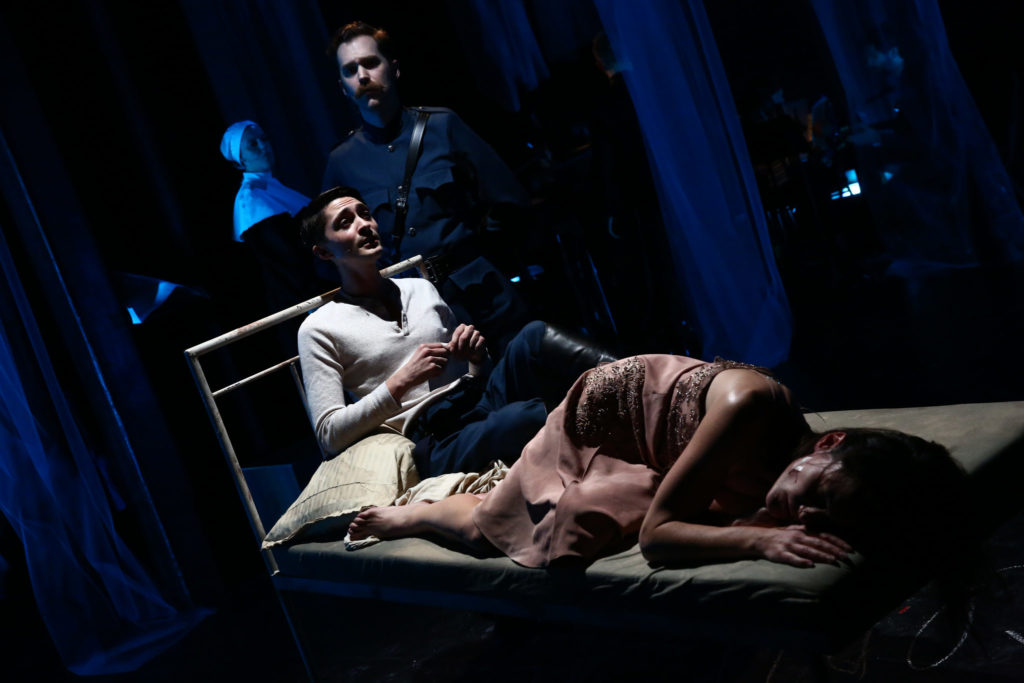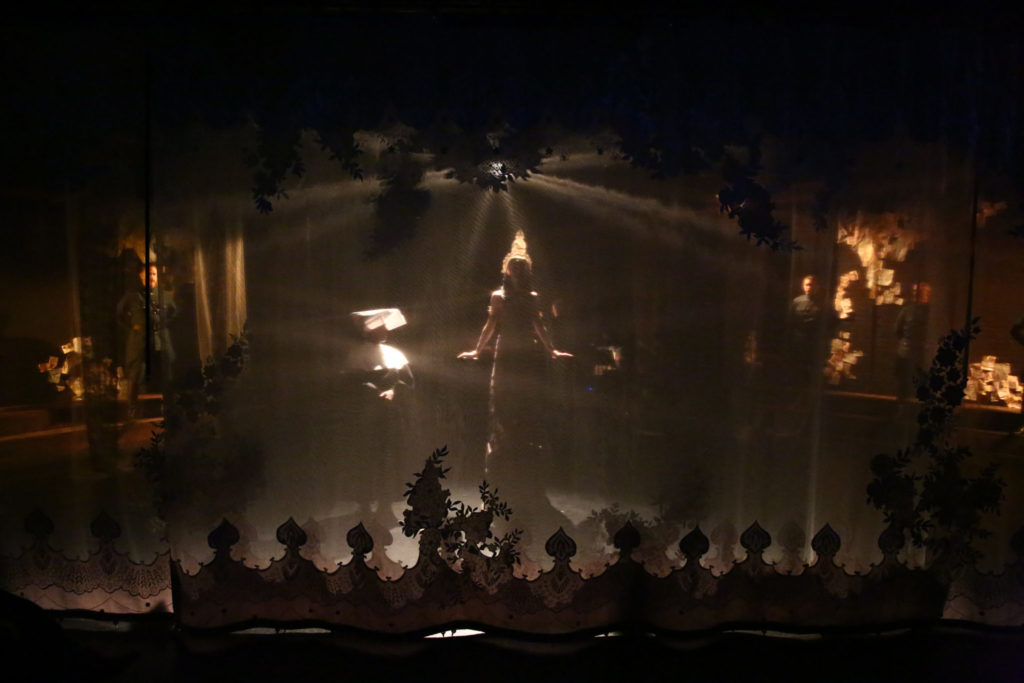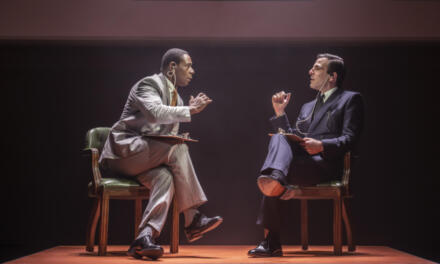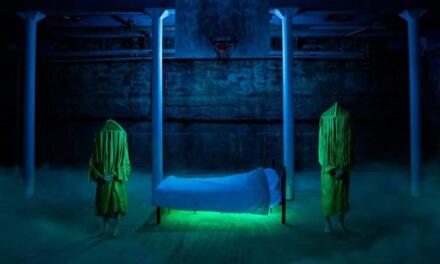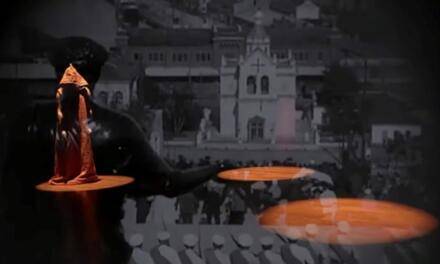There is no doubting the ambitions of Mata Hari, enjoying its world premiere at HERE, in New York’s Soho. An opera based on a historic figure who seldom sings, Mata Hari immediately declares its intent to break from convention. Once it becomes evident this heroine, embodied by Tina Mitchell, will be enunciating not singing her lines, one can settle into enjoying the various threads that comprise this engaging new work by composer Matt Marks and librettist Paul Peers, the latter doubling up as director.
The story hews closely to a popular biography of the titular character, a mysterious woman and convicted spy who recounts her life from the confines of a prison cell. The theme of a woman who eschewed conventional norms of monogamy and patriarchy for a form of immortality is mirrored in the portrayal of a strong female lead character whose great love is but a supporting player in her life. She is surrounded by men yet is hampered by her inequality; they sing, yet she does not.
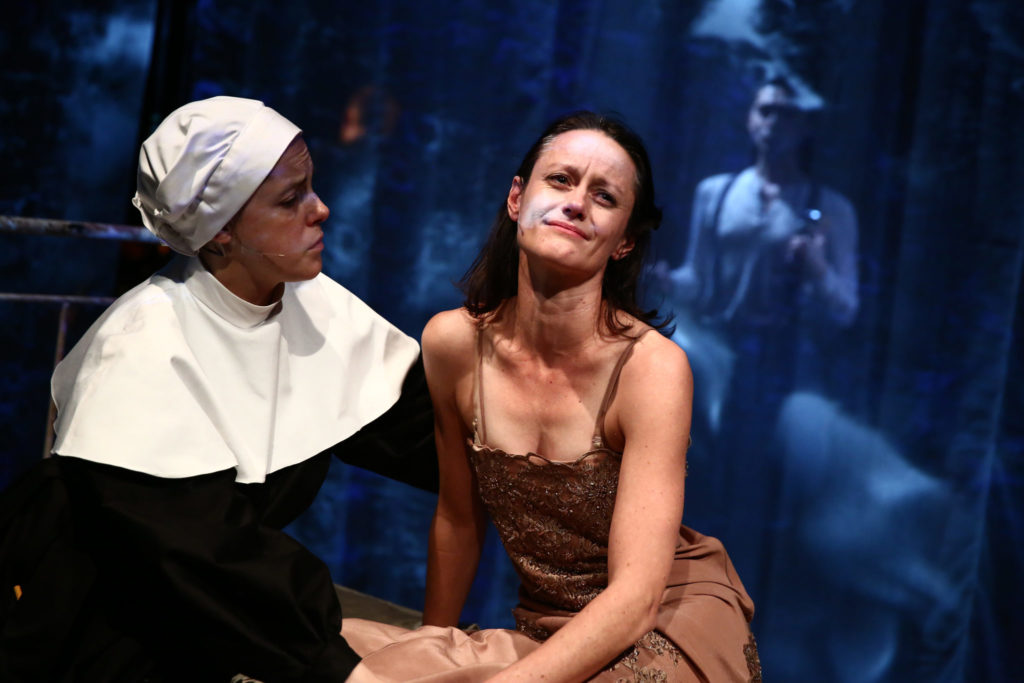
Mata Hari. Photo credit Paula Court
The sole another female character, that of Sister Lèonide, is embodied by the potent Mary MacKenzie. Her sturdy yet sympathetic portrayal offers an effective contrast to Mitchell’s emotionally embattled heroine. The male ensemble of five appealing performers, all with rich, vibrant voices, are likewise deployed effectively to unravel the story of a proto-feminist icon.
Boyish Tomás Cruz is the only performer called upon to double up, portraying both Vadime and Mata Hari’s son, Norman. His white tunic and velvety tenor distinguish him from his fellow male performers, with their aquamarine military garb and lower registers. Cruz’s words are matched with music that recalls those love ballads Paul McCartney consistently sang during his Beatles tenure.
The four-piece orchestra impressed with its range and dynamism. All were standouts, including guitarist James Moore, whose instrument was enlisted, at times, to paint soundscapes as atmospheric as the other visual components of this dazzling production.
Matt Marks has an encyclopedic knowledge of pop music, which he integrates into the range of musical genres woven into his distinct, rock-inspired style. Among those genres are a military march, post-rock dissonance, chorale and pre-rock crooner ballads.
Paul Peers’ refreshingly contemporary libretto melds seamlessly with the music. His is a style equally at home with humor as with more overtly emotional lyrics. He deftly balances pith and pathos. The team of Marks and Peers is simultaneously striking and intuitive; it seldom draws attention away from the action and towards itself.
The costumes are scrupulously rendered, both in Mata Hari’s beaded gown, and the vibrant, yet restrained, military uniforms of the soldiers. The lighting becomes more effective as the performance unfolds and is balanced by spare video projections. The scenic design consists of a stark stage decorated with layers of suspended sheer fabric. The fabric motif extends to decorative downstage curtains, shielding the audience from the opening scene. It was only at the end when upstage fabric rolls were silently unspooled in a geometric formation, that the fabric motif revealed its overall intent.
The scenic design hit a snag in its utilization of curtains to suggest varied settings. While the presentational effect of the male actors drawing the curtains across the stage may have been deliberate, the noisy casters were likely an unintended distraction. One couldn’t help wonder whether scenic panels would have been similarly effective at evoking a sense of a framing device, of delineating changing action and mood.
Mata Hari, January 5-14, 2017 at HERE, New York City.
Jack Wernick is a playwright, stage director, and educator. His work has been presented in New York by the New School for Drama, Naked Angels and the Tank. He has been published in HowlRound. He has a B.A. in Theatre from Antioch College.
This post was written by the author in their personal capacity.The opinions expressed in this article are the author’s own and do not reflect the view of The Theatre Times, their staff or collaborators.
This post was written by Jack Wernick.
The views expressed here belong to the author and do not necessarily reflect our views and opinions.

